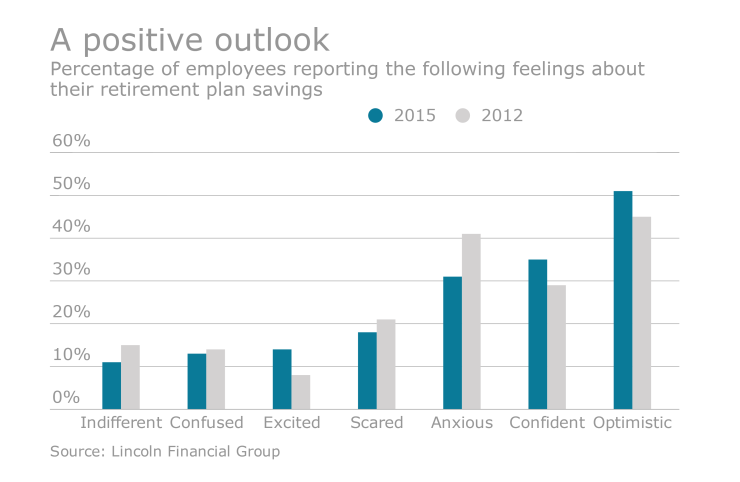Managed accounts have grown in popularity but there is room for improvement in how they are organized and offered to retirement plan participants.
“Managed accounts have already evolved significantly to where we are today,” says David O’Meara, senior investment consultant with the New York office of Willis Towers Watson. “Accounts provided somewhat personalized investment advice, and could advise on savings rate and retirement rate, but over time, the robustness of the models and their ability to incorporate additional information has grown tremendously. [At the same time], the user experience and functionality of the tool itself has improved dramatically.”
But even though they are easier to use and offer a more intuitive way of providing advice to participants, “we think there is still room for managed accounts to grow and allow plan participants to retire in the best possible manner they can,” he adds.

Managed accounts can be a great option for employees who want professional help in managing their retirement savings, but a significant number of plan participants sign up for a managed account even tough they don’t engage with it, says O’Meara.
“They don’t personalize their information and get all the value of the customization that a managed account can provide. We see that as a large disconnect that needs to be closed in order for managed accounts to really gain in popularity. They need to find a way to get plan participants engaged and keep them engaged in their accounts. If they are not, then it becomes a very expensive generic asset allocation program,” he says.
Cost can be a major deterrent to using a managed account. Managed account fees start at 50 basis points. If they are used as a qualified default investment alternative, the fees may be slightly lower. The services offered can be valuable to a certain segment of the plan population that is more engaged with their plans, he says, therefore the cost may not matter to them. The fees charged for managed accounts are typically less than what a financial adviser would charge for an in-person meetup.
The rise of so-called robo advisers has brought costs down in the retail market so it isn’t far-fetched to believe those cost savings will eventually transfer over to the institutional market, O’Meara says.
Willis Towers Watson believes that additional automation will make managed accounts more usable to the average participant. The more that is automated, the less time a plan participant will have to spend on making retirement savings decisions.
“Somehow there needs to be an easier way to communicate with people so they understand what the goals are here and how to get those individuals to spend the time on the most important issue as they work through their careers and ultimately prepare for retirement,” he says.
An expanded horizon
Managed accounts have expanded their purview. They are not just focused on retirement financial outcomes but on building up the mechanisms to assist plan participants with financial wellness. That means helping them with their short-term and long-term financial needs.
“Managed accounts can assist plan sponsors in reaching those individuals and helping those individuals with their short-term concerns. The more productive that employees will be today, the more prepared they will be for retirement in the future,” O’Meara says.
The retirement industry is always telling people they need to save more for retirement, but that isn’t always easy to do for people who have looming short-term financial obligations.
Another way to help solve the retirement income puzzle is to move 401(k) plans away from being accumulation vehicles to being income vehicles. Currently, there isn’t a great solution to help people transition from their working career to their post-working career, says O’Meara.
“The vast majority of plan participants take all their money out of the plan when they retire and roll it over to a much more expensive IRA provider. The defined contribution marketplace is ripe for innovation related to retirement income,” says O’Meara. “It is a much more efficient distribution system than the IRA market is and we can help literally millions and millions of people better prepare for retirement if we can build the tools into the DC system to help plan participants evaluate the different aspects of the income they need in retirement and what the sources of their income should be at various points in retirement.”
Willis Towers Watson believes that managed accounts are well-positioned to play a key role in what can make DC plans a sustainable retirement vehicle.
Willis Towers Watson would like to see managed accounts become the go to qualified default investment alternative or QDIA for 401(k) plans. Currently, target-date funds hold that position. One option is a hybrid qualified default investment alternative that starts off as a target-date fund for younger employees. It is a cheaper option for people who are at the beginning of their careers and don’t have as much money saved up. When they reach a certain age, like 50 or 55, the plan would switch to a managed account.
Older people need more advice and more help transitioning to retirement and could benefit from more bespoke asset allocation advice, he says. This type of plan would boost the utilization of managed accounts because they would target people who are ready to think about retirement and who have accumulated a good sum in their retirement accounts.
Another way to push engagement in managed accounts is to speak with people during open enrollment season for their other workplace benefits. As part of that, human resources professionals could take people of a particular age and guide them toward inputting all of the information they need to take full advantage of a managed account, he says.
Getting employees better prepared for retirement has financial benefits for the employer, like having people retire when they need to retire instead of retiring on the job.





